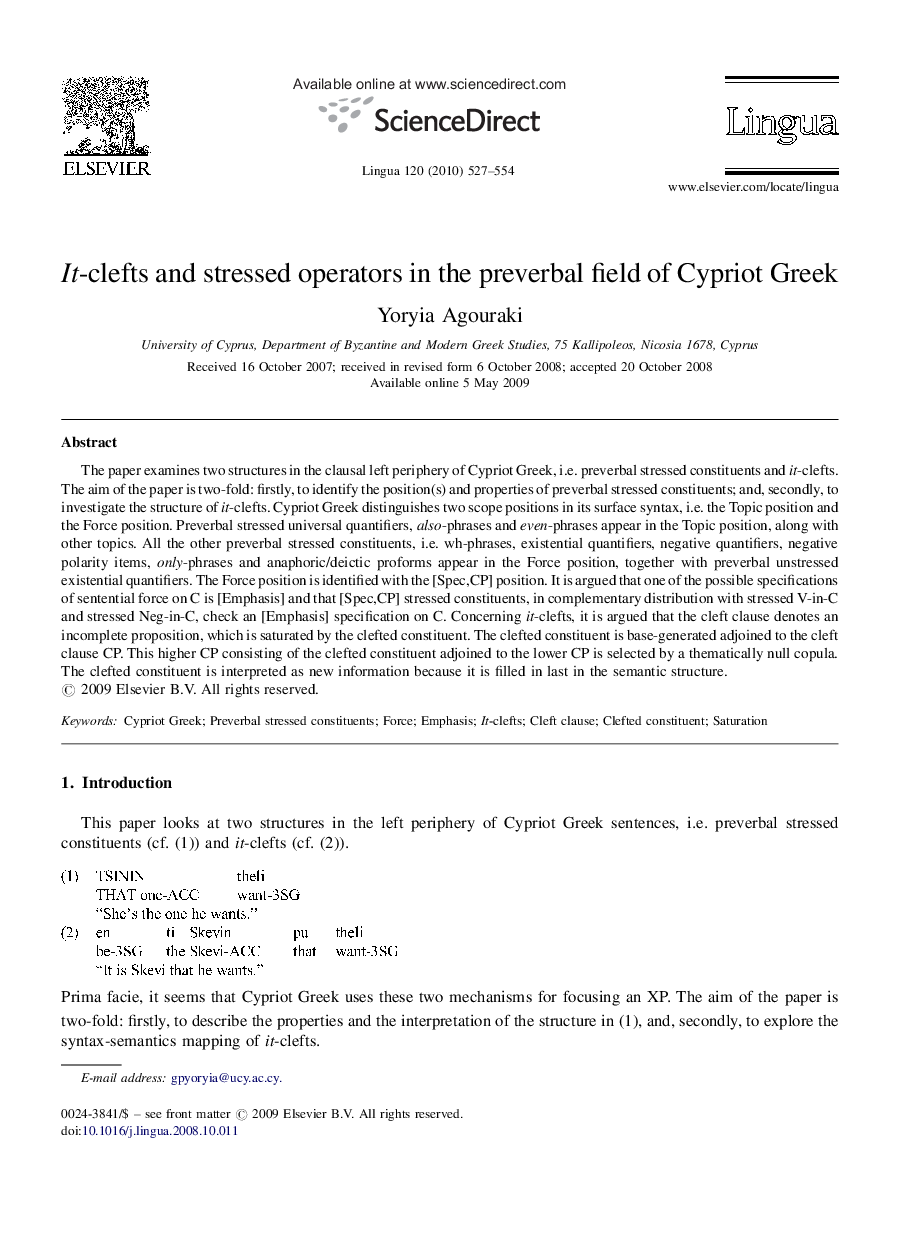| کد مقاله | کد نشریه | سال انتشار | مقاله انگلیسی | نسخه تمام متن |
|---|---|---|---|---|
| 936303 | 924004 | 2010 | 28 صفحه PDF | دانلود رایگان |

The paper examines two structures in the clausal left periphery of Cypriot Greek, i.e. preverbal stressed constituents and it-clefts. The aim of the paper is two-fold: firstly, to identify the position(s) and properties of preverbal stressed constituents; and, secondly, to investigate the structure of it-clefts. Cypriot Greek distinguishes two scope positions in its surface syntax, i.e. the Topic position and the Force position. Preverbal stressed universal quantifiers, also-phrases and even-phrases appear in the Topic position, along with other topics. All the other preverbal stressed constituents, i.e. wh-phrases, existential quantifiers, negative quantifiers, negative polarity items, only-phrases and anaphoric/deictic proforms appear in the Force position, together with preverbal unstressed existential quantifiers. The Force position is identified with the [Spec,CP] position. It is argued that one of the possible specifications of sentential force on C is [Emphasis] and that [Spec,CP] stressed constituents, in complementary distribution with stressed V-in-C and stressed Neg-in-C, check an [Emphasis] specification on C. Concerning it-clefts, it is argued that the cleft clause denotes an incomplete proposition, which is saturated by the clefted constituent. The clefted constituent is base-generated adjoined to the cleft clause CP. This higher CP consisting of the clefted constituent adjoined to the lower CP is selected by a thematically null copula. The clefted constituent is interpreted as new information because it is filled in last in the semantic structure.
Journal: Lingua - Volume 120, Issue 3, March 2010, Pages 527-554